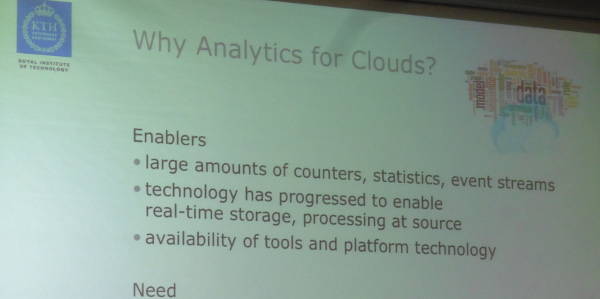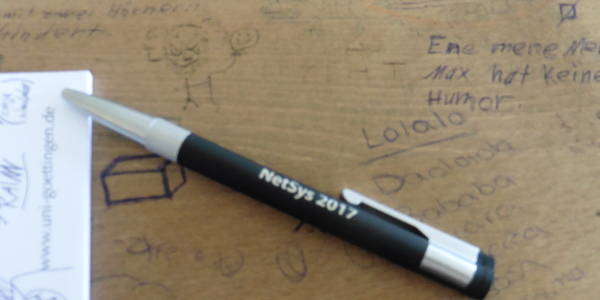NetSys is a regular biennial conference covering networked and distributed systems. This year, NetSys’17 took place in Göttingen, Germany. We have attended and report on some of the research and technology trends, obviously with a focus on our own research directions. Apologies ahead for not giving a full account of the whole conference as our presence was limited by lecturing duties.
A very interesting keynote was given by Rolf Stadler, who previously worked in the academic and industrial research space of the canton of Zurich and now leads research at KTH in Stockholm, Sweden. The work on more systematic extraction of monitoring data to perform analytics for the cloud (not to be confused with using clouds for performing analytics, i.e. data science work) corresponds with our work in making cloud environments more predictable and resilient. The main approach is to create system models through observations which at some point will run in real-time. The system model allows for differentiating capacity regions in which the system can somehow probably handle the load and feasible regions in which the handling is guaranteed which opens the path to automated verfification of Service-Level Agreements (SLAs) between cloud application providers and consumers.

Another interesting talk was given by Felix Büsching from TU Braunschweig who along with his colleagues Dominik Schürmann, Sebastian Willenborg and Lars Wolf presented a concept for Redundant Arrays of Independent Motes. The work shares several similarities, including the motivation angle of Personal Area Networks or Body Informatics and the user-controllable range of full redundancy to full confidentiality for distributed computation, with our previous work on Stealth Computing. Due to the more explicit hardware dimension of their work, we assume that similar concepts may become useful for managing fleets of robots with applications shared among them through the cloud, which is a topic of our Cloud Robotics research initiative.
Matthias Flittner, Alexander Weigel and Martina Zitterbart from KIT have presented gAudit, a group communication-capable request-response middleware for auditing clouds. A useful scenario is to apply the proposed technique for increasing the transparency in clouds and conveying what is going on to the consumers. The work’s use case has focused on the virtual machine level (i.e. using libvirt) which leaves future work on other application deployment models, in particular hybrid ones with a mix of VMs, containers and functions as considered by our Service Tooling and Cloud-Native Applications research initiatives.

Göttingen is a vivid university town with a small pedestrian-area centre which is a familiar setting from any researcher who crosses Winterthur. The conference attracted not only academics, but also had industrial input from Google on personalisation of cloud services for everyone, from Volkswagen and Open on autonomous driven in a very impulsive panel session, from NEC who sponsored excellent work, and from Nokia Bell Labs who look for the next crazy ideas in research. The state of the art is clearly such that even on a ten years horizon neither permanent network connectivity nor reliable system nor standardised homogeneous interfaces can be assumed. Hence, our research direction to eventually assist application engineers of bringing their applications to the cloud with confidence and with guidance in choosing the right methods and technologies continues to be the right one.

NetSys’17 overall offered a nice mix of familiar faces mostly from the DACH region and the KuVS community, inspiring input from the partner region of this year (the Nordic countries), and international participants. NetSys’19 has been accounced to take place in Munich and we look forward to present results of our work at this next edition.
